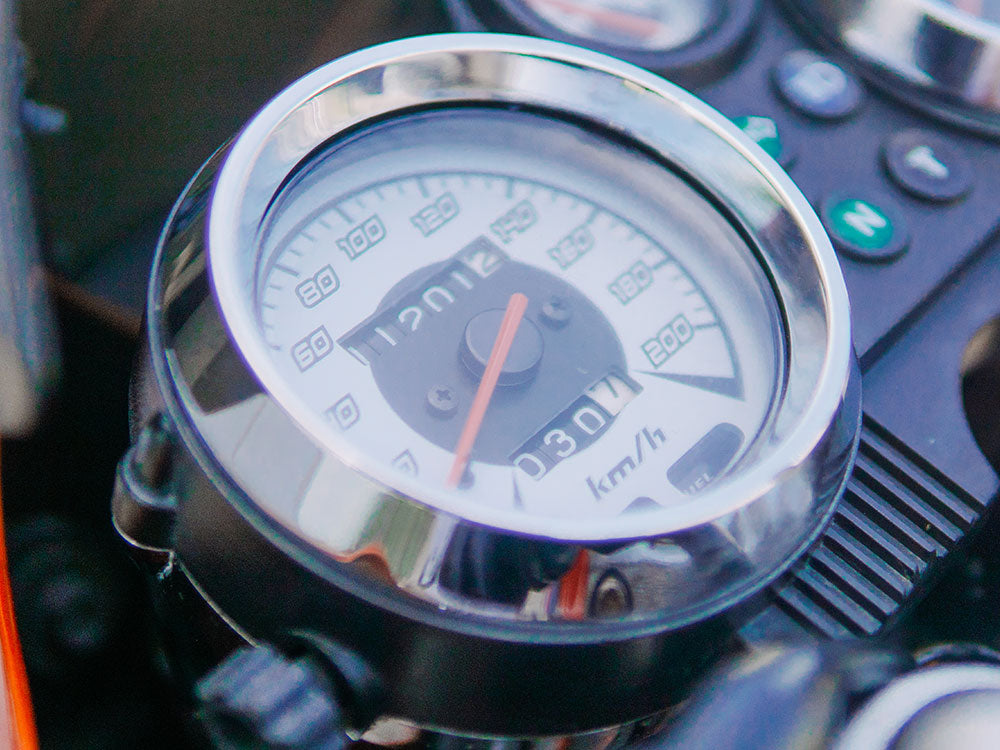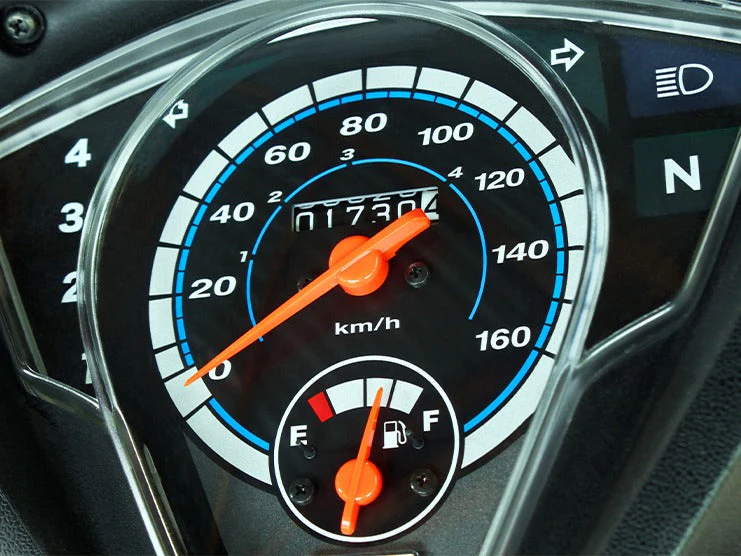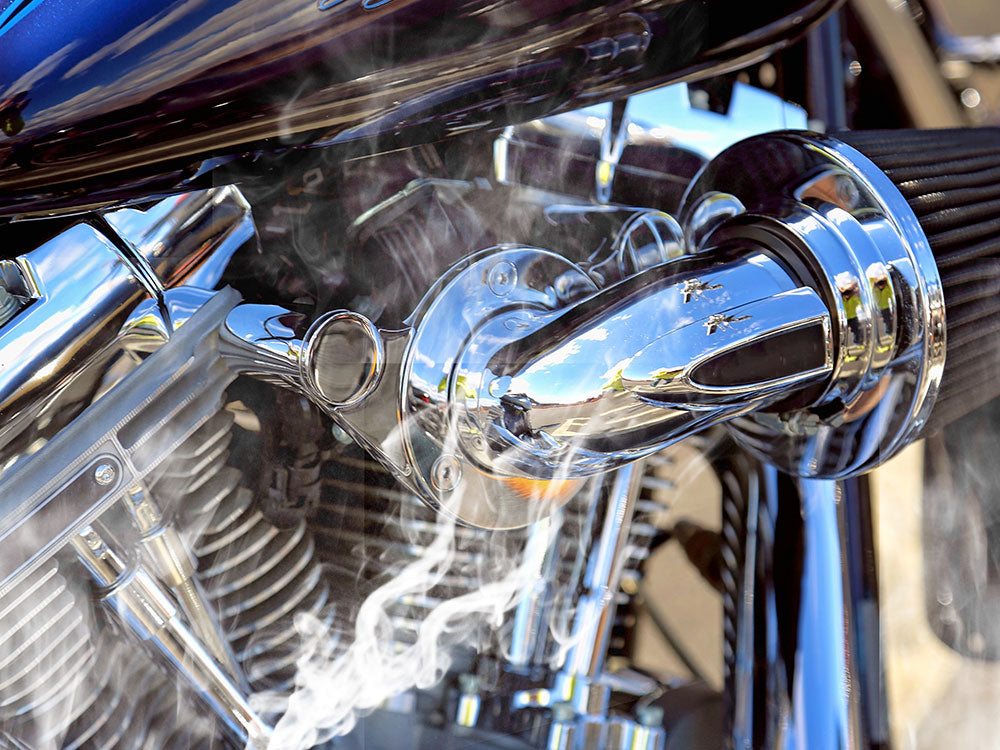The motorcycle won’t shift into neutral if the clutch is not functioning properly or hasn't been properly maintained. You will have to shift the gear up and down and rock your motorcycle back and forth to shift into neutral.
This article will discuss the reasons why your motorcycle won’t shift into neutral.
Table of Content

1. What is False Neutral?
False neutral is a sort of limbo between two gears, with neither gear fully engaged. Though this doesn’t damage the motorcycle’s engine or gearbox, this can be a cause of frustration for riders.
False neutral can occur on old and new motorcycles. The cause of false neutral in old motorcycles is due to the gear being worn out and the shift fork being bent. There are equal chances of this situation in a new motorcycle as well, so you can’t regard this issue as a fault of worn-out parts in the motorcycle.
For new motorcycles, false neutral occurs when the rider attempts to shift gears while accelerating or trying to switch between gears too quickly. This state will occur when the gears of the motorcycle are upward or downward shifting.
The issue of the new bikes entering the false neutral condition may arise when the slotting gears are made to run quickly. It is noticeable when the gear shifter is tapped when the proper amount of pressure is not applied to the gear shifter.
2. Why is it Difficult to Find Neutral on Motorcycles?

The main reason why it is hard to switch a motorcycle into neutral is due to the clutch cable being over-tightened. The lack of slack doesn’t allow you to shift completely when trying to switch to neutral gear.
3. Reasons Why Your Motorcycle Won’t Shift Into Neutral
3.1 Clutch Not Adjusted Properly
If your motorcycle is having issues shifting into neutral, first check the clutch cable. Sometimes the lever hinge or clutch cable assembly may be damaged which can cause the clutch cable to malfunction.
If your motorcycle clutch is not properly adjusted, follow these steps below to return it to its factory settings:
- Perform a thorough inspection to find out if the clutch cable is too tight or loose. The cable should not be too tight that the lever is hard to pull or too loose that the lever swings freely.
- To add or release tension to the clutch cable, use the circular dial closer to the hinge point of the lever.
- Make the required adjustments and recheck multiple times.
- To confirm proper functionality, perform a road test.
It’s worth discussing how a motorcycle should function and shift with a properly adjusted clutch and what things to look out for that show improper adjustment of the clutch.
If your motorcycle feels sluggish when accelerating, the clutch may be sliding, preventing power from reaching the rear tire. If you pull the clutch lever all the way when the motorcycle is in first gear at a stop and the bike continues to creep forward, the clutch may need to be adjusted. If not fixed right away, this might cause the clutch to prematurely wear out due to heating up. Also, it will be quite difficult for you to engage in neutral.
3.2 Not Enough Oil
Not having enough oil in the system is another possible reason why you are unable to shift your bike into neutral. Either you are using low-quality oil or the oil level in your motorcycle is low.
Lubrication is crucial for the clutch to operate smoothly; otherwise, a lack of oil will cause more friction whenever you try to shift gears. Check your motorcycle’s oil levels frequently to avoid unnecessary wear and tear.
3.3 Overdue Oil Maintenance
If the engine oil is dirty, old, or burned, the clutch could malfunction and wear out more quickly. It is recommended you replace the engine oil every 3,000 miles to keep the internal engine components from wearing out early.
When engine oil breaks down due to time and use, it becomes a less effective lubricant that will need to be changed to prevent damage to the clutch and engine.
When you change old engine oil, it leaves behind sludge residue and contaminants on the cylinder head, valves, clutch, etc. Make sure to properly clean the engine parts before pouring in new oil.
3.4 Clutch Failing
If your motorcycle still has problems shifting gears after adjusting the clutch, you may have a faulty clutch assembly. The clutch system is easy to repair if you have standard tools.
The clutch is covered in a case that’s bolted on the right side of the engine and sealed in a gasket. The clutch cover must be sealed since it rotates the engine oil.
How to Find Out if Your Motorcycle Clutch is Broken
If you is slipping often when you try to accelerate aggressively, the clutch may be broken and will require maintenance. Even if the RPMs increase as you try to accelerate, the bike's speed won't change. A broken clutch will cause the rotating plates to slide instead of propel your motorbike forward. These plates naturally deteriorate over time and must undergo regular maintenance checks. If they are severely damaged, you may also need to replace the clutch.
3.5 Warped Clutch Plates
Warped or burnt plates are not as common, but may make it harder to shift the gears to neutral. If you have traveled long distances on your motorcycle recently, then there’s a chance that the clutch became overheated due to riding at full power.
If your motorcycle has wrapped clutch plates, bring your motorcycle to be fixed by a mechanic or replace them with new ones.
3.6 Damaged Components
If you repair your motorcycle following an accident but it is not shifting gears properly or switching into neutral, you may have missed a component while making repairs.
Check all the motorcycle components, including the shifter linkage, rear sets, clutch lever, and clutch cable. If all these components are in good condition, the issue may be a damaged internal transmission.
A way to protect your bike is by using a clutch cover and a set of frame sliders to prevent damage if the motorcycle falls to one side.
3.7 Binding Linkage
A binding linkage does not happen often but could occur in the foot-actuated shifter linkage. The shifter lever is mounted to the rear sets with a bolt. If this bolt is overtightened or the rear set is not correctly lubricated, the linkage could become stuck, which can result in clunky gear shifting.
The binding linkage may occur if a rider adds a rapid shifter or replaces the rear sets with an aftermarket arrangement. Make sure to consult the repair manual before reassembling the left-side footrest to determine which joints need lubrication and the right amount of tension for the mounting bolt.
4. Tips to Avoid False Neutral
To avoid being stuck in false neutral, it’s best to preload the shifter before pulling out the clutch and downshifting the gear. This is an effective way to avoid false neutral, especially for new motorcycles. Preloading the shifter helps makes it easier to shift to the right gear.
Another important tip to keep in mind if stuck in false neutral is to upshift. Avoid downshifting since it is more likely the rear wheel will lock up if trying to get out of false neutral.
If you are experiencing the same issue with an old motorbike, you can fix this by maintaining the gear transmission. You can also consider repairing or replacing faulty motorcycle parts, including the shift drum, shift fork, gear, etc.
5. Last Words
Sometimes, your motorcycle doesn’t want to shift to neutral. The main reasons why your motorcycle won’t shift into neutral are improper adjustments of the clutch, less quantity and poor maintenance of oil, failing clutch, warped clutch plates, and damaged clutch components.
There is a complete range of aftermarket parts available at Viking Bags, including sissy bars, crash bars, fairings, seats, luggage racks, and handlebars.













Leave a comment
All comments are moderated before being published.
This site is protected by hCaptcha and the hCaptcha Privacy Policy and Terms of Service apply.